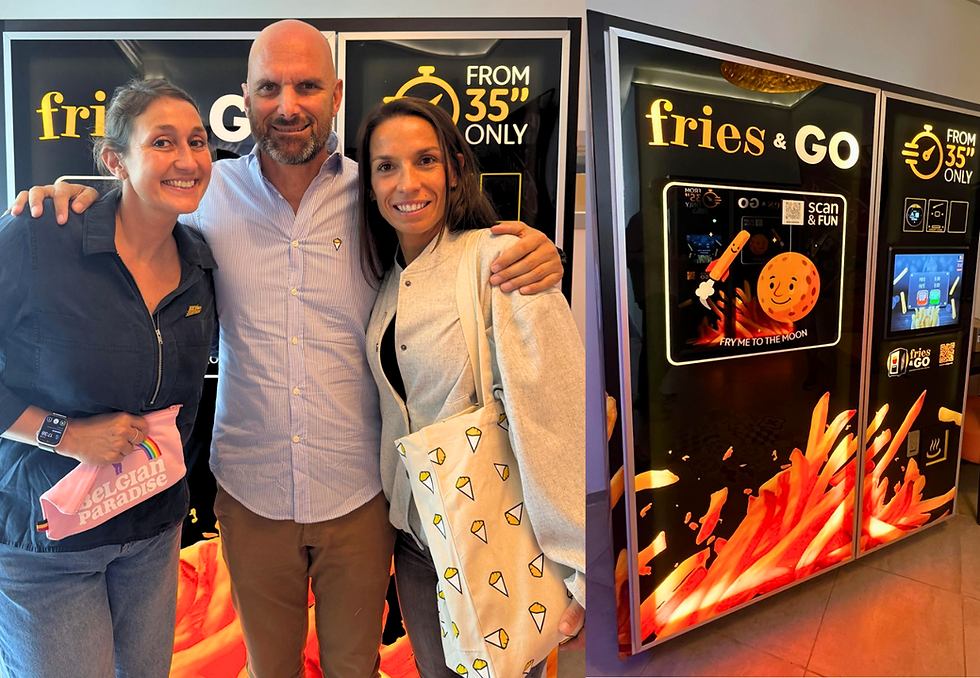Soju: the Korean spirit at the gateway to Europe and Belgium
- Gondola Foodservice
- Apr 10
- 2 min read
Updated: Apr 13

The European market for soju is growing rapidly. In 2024, the market value is estimated at 1.85 billion dollars, with an expected annual growth of 3.5% until 2031. This traditional Korean drink is still relatively unknown in Belgium, but could well present an interesting opportunity for the Belgian food service sector in the coming years.
A fast-growing market
Soju, the iconic alcoholic drink from South Korea, will represent a market of 6.15 billion dollars worldwide in 2024. An annual growth of 5% is expected by 2031. In Europe (which accounts for about 30% of the global market), soju is gradually gaining popularity, mainly thanks to the growing interest in Korean culture.
This trend is particularly visible in large European cities with a diverse gastronomic offering, where soju is increasingly appearing on the drinks menu of restaurants serving Korean or Asian fusion cuisine. In Antwerp, the recent opening of a specialized bar is evidence of the cautious emergence of this trend in Belgium.
A versatile spirit with character
Soju originated in the 13th century during the Korean Goryeo dynasty and is traditionally distilled from rice, barley, sweet potato or tapioca. Major commercial brands distill their soju to a high alcohol percentage, after which it is diluted to a drinking strength of between 16% and 25%. The result? A spirit reminiscent of a softer, more accessible version of vodka.
The subtle, slightly sweet taste makes soju ideal as a base for cocktails, in which fruit, herbs and other ingredients can be used to create unique concoctions. Fruit infusions, such as soju with watermelon, are also gaining popularity internationally.
Potential for the Belgian market
Although soju is still a niche product in Belgium, there are several signs that the drink could break through here in the future. The Belgian market for alcoholic beverages experienced a sharp drop in sales volume in 2023, partly due to economic pressure and inflation. Against this background, a new category of spirits such as soju could well bring a breath of fresh air to the market.
Moreover, soju fits in well with changing consumption patterns, especially among younger generations. Recent figures show that almost 65% of Generation Z intends to drink less alcohol in 2025, a clear indication of the growing “sober curious” trend.
Young people today are more conscious of their physical and mental health and are looking for lighter alternatives. Soju, with its moderate alcohol percentage (16-25%), fits that profile perfectly. In addition, young consumers are attaching increasing importance to social experiences that do not necessarily revolve around heavy alcohol. That opens the door for popular mixed drinks such as “somaek,” a combination of soju and beer, which fits in perfectly with Belgian beer culture.
The K-pop effect: a cultural accelerator
The recent collaboration between Rosé of BLACKPINK and Bruno Mars on the song “APT.” has also put soju in the international spotlight. In the song, which refers to a popular Korean drinking game, “somaek” plays a prominent role. The effect was even felt on the stock market: the shares of HiteJinro, South Korea's largest soju producer, rose sharply. This development could accelerate the introduction of soju in Europe, especially among a young, digital audience, an important target group for the hospitality industry and nightlife.



